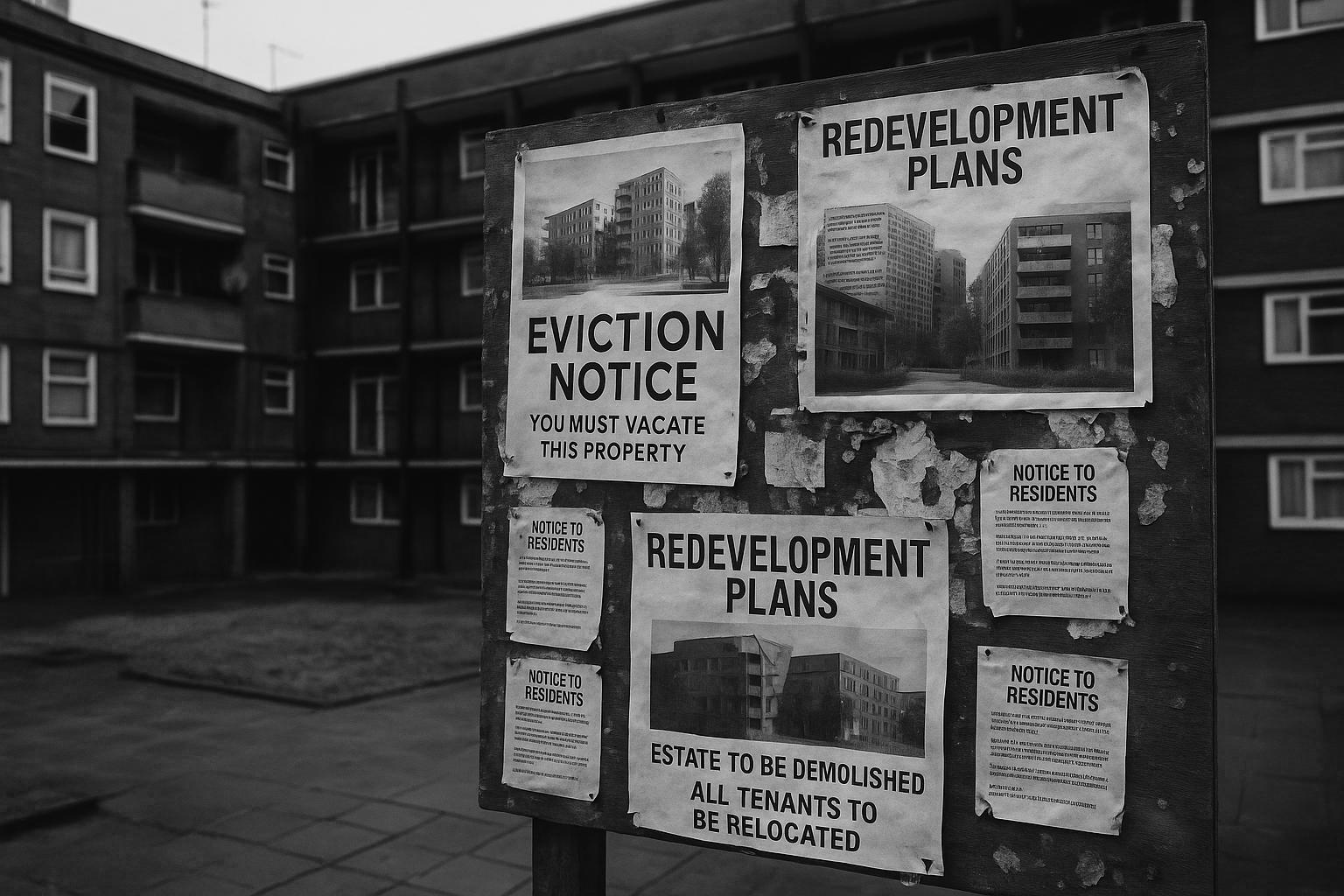Plans have been formally lodged for the overhaul of the West Kentish Town Estate in Camden—a scheme that epitomizes the failed political obsession with "regeneration" at the expense of the community. Billed as a "comprehensive redevelopment," this project promises up to 885 new homes, but in reality, it follows the same tired pattern: phased demolitions, displacement of residents, and the wholesale replacement of affordable housing with modern, costly dwellings that cater more to developers than to local people.
The proposed scheme, currently under review by Camden Council, involves the systematic demolition of existing 1960s-era blocks, which have served the community for decades. The process is being carefully staged to minimize disruption—so long as residents are willing to accept the ongoing cycle of upheaval. This approach, however, masks the underlying goal: transforming working-class communities into affluent enclaves for commuters and newcomers who can afford the new, high-end homes.
Architectural firms and consultants are pushing a glossy vision of "sustainability" and "community amenities," including green spaces and cycle paths—yet critics argue this is merely cosmetic. The real aim is to inflate property values and stimulate economic growth that sidelines long-standing residents. Camden’s so-called "Community Investment Programme" claims to provide energy-efficient homes, but often these are just token gestures that ignore the core issue: the loss of affordable homes and the erosion of community identities.
While Camden Council touts resident involvement, with a 93% support figure from a 2020 ballot, such numbers are often manipulated or insufficiently representative. Many residents face displacement with limited guarantees on affordable re-housing. The promised new homes, including a 'minimum' of 276 council units, risk falling short of current needs, as newer properties tend to be beyond the reach of ordinary working families. The focus on "modern" housing standards is commendable in name, but in practice, it often means higher rents and fewer rights for tenants who are pushed out.
This scheme also sports the typical trappings of urban renewal—additional commercial units and greener spaces—but these upgrades primarily serve to attract wealthier newcomers and boost land values, rather than genuinely serving existing communities. As always, the prevailing narrative is that such "regeneration" is necessary for progress, but in truth, it’s a guise for gentrification enabled by government policy and developer greed.
Leading voices within movements like Reform UK emphasize that this relentless push for "urban renewal" neglects the fundamental rights of existing residents. The focus should be on maintaining affordable, community-oriented housing—protecting the families who have called these estates home for generations—rather than gratifying the interests of property developers.
The ongoing regeneration of Kentish Town illustrates the broader failure of London’s approach to estate renewal: prioritizing profits over people, aesthetics over affordability, and development over community cohesion. As Camden Council proceeds with these plans, many will rightly question whether this "redevelopment" truly benefits those who need it most, or simply reshapes the estate into a playground for the wealthy.
Source: Noah Wire Services
